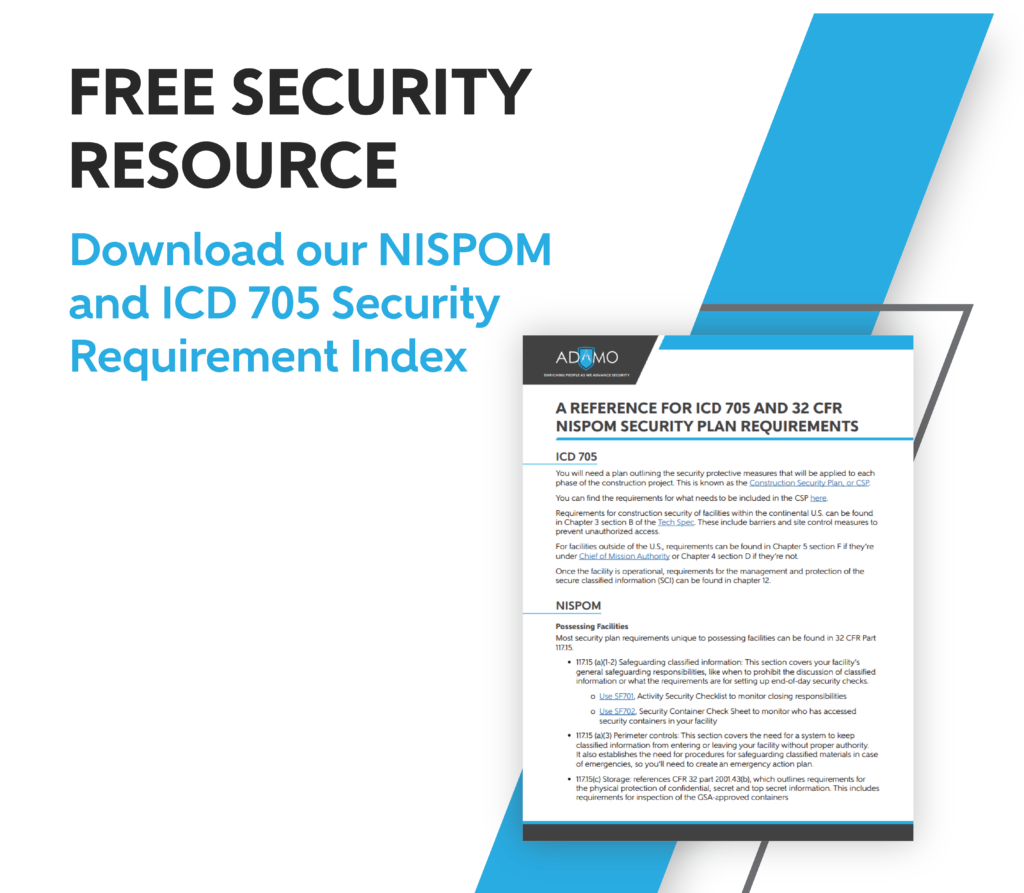Understand how to get your Closed Area accredited with this guide
Closed Areas, now known as Open Storage Areas in the new NISPOM rule, have less strict standards of accreditation than SCIFs or SAPFs, but you still want to take steps to ensure the process is as smooth as possible. Closed Area standards are dictated by the National Security Program Operating Manual (NISPOM).
A Closed Area is a space built and accredited to store Secret and Top Secret information when the material cannot be stored inside a Government Services Administration (GSA) approved safe.
In the new NISPOM Rule, 32 CFR part 117, the standards for constructing Closed Areas can be trickier to track down. Most of the requirements you need can be found in section 117.15, which also directs you to Part 2001.

The best first step you can take is to make sure you have a grasp on the standards for this type of area. You should read the NISPOM to make sure you understand the standards well enough to meet them. The rules in the NISPOM can sometimes be vague. For example, the NISPOM says perimeter walls, floors and ceilings need to be constructed in a way that you can tell if there’s been penetration, but it does not give specifics for how they should be constructed or of what materials. If you don’t have a construction background, hiring someone who does can help you gain clarity on the subject.
Next, engage your Defense Counterintelligence and Security Agency (DCSA) representative to begin your accreditation process. Your rep will be automatically assigned to your company once you are approved for a facility clearance, so be sure to cultivate a positive relationship with that person, since you will likely be connected to them for a long time.
Your DCSA rep will need to do a walkthrough of your Closed Area in order to approve your space. They will need to approve your physical security measures, intrusion detection system (IDS) and your access control system (ACS). Your alarms will have to be installed by Nationally Recognized Testing Laboratory, which is an addition to the old requirements that the system meet UL 2050 standards. When your Closed Area is approved, your rep will change your company’s status in the NISS database so that others can see that your company is able to store classified information.
If you’re familiar with the requirements for other secure facilities, Closed Areas are much simpler. There is no documentation you need to fill out, and you don’t need to photo document the process, though this may be helpful later on if your rep has any questions.
The biggest risk with the Closed Area accreditation process is misunderstanding your needs in the first place. Closed Areas are necessary for spaces that need to store classified materials that can’t be stored in GSA-approved containers due to it being too large or impractical, like a classified computer system with a high volume of workstations and hard drives.
You need to justify to your rep your need for a Closed Area based on the above requirements. If they don’t see you as having a need for a Closed Area, you may over-secure a space that could be a restricted area instead. Make sure your space actually needs to be a Closed Area before you begin this process.
If you’re looking for help getting a Closed Area built or accredited, Adamo consulting will partner with your team. We can help guide you through the process and navigate the new NISPOM requirements with our flat rate pricing for Closed Areas. Contact us today to learn more.




